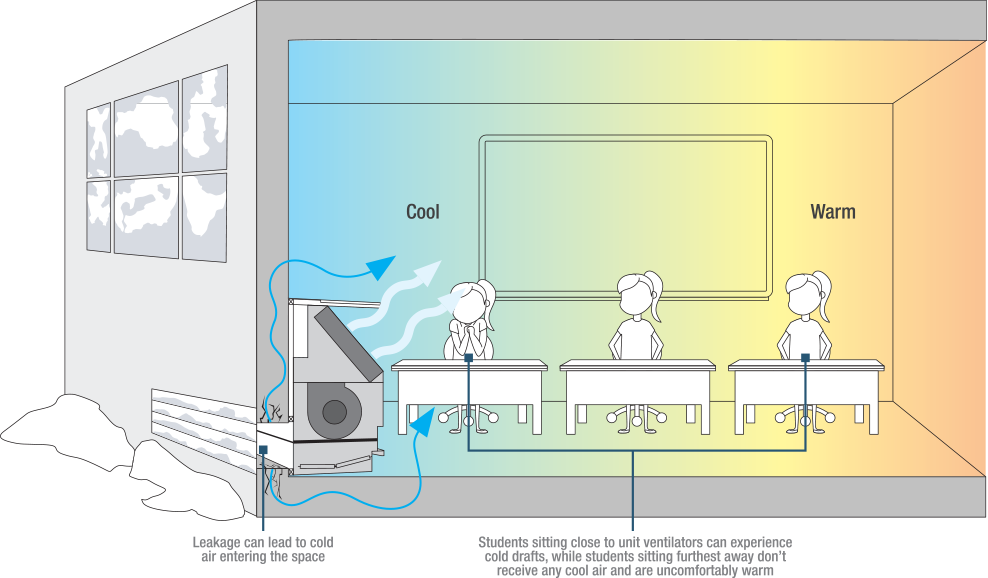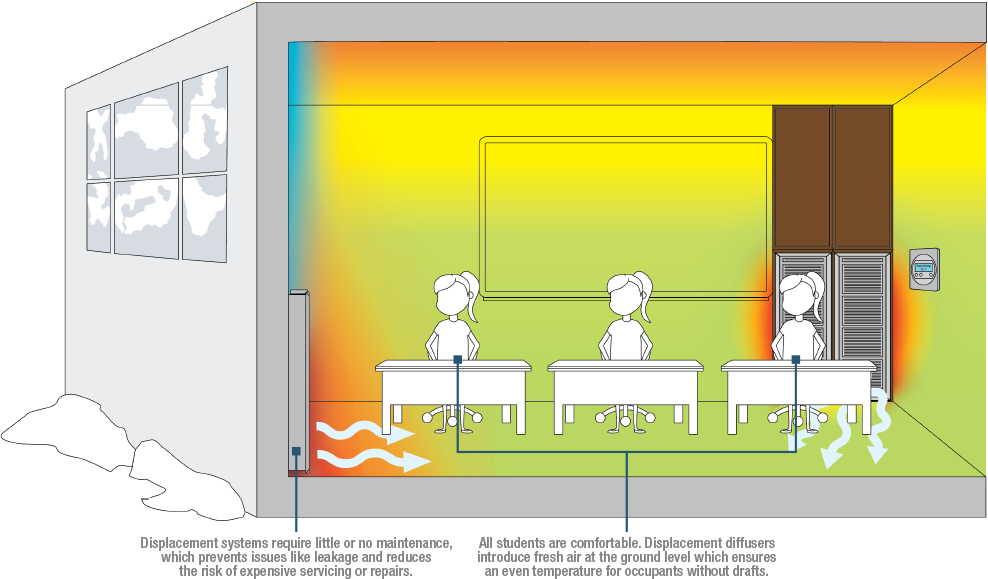
Displacement ventilation systems have led to higher overall school indoor air quality and lower CO2 levels. Many schools report reduced absenteeism, some as high as 25%.”
Massachusetts Design Engineer Principal
The animation provides an illustration of what happens when particles, such as from a child sneezing, enter the space.
In a displacement system the sneeze particles (red) are pushed up and out of the breathing zone.
In a mixing system the sneeze particles (red) are mixed throughout the space.

Energy Savings = Cost Savings
You don’t have to run your cooling equipment. An all air displacement system can significantly reduce long term operational costs by cooling a space using outdoor air.
Using 100% fresh outdoor air can improve occupant health and performance.

…Thermal displacement was really a key to unlock the door to a lot of energy savings…Our results here at (Odyssey Elementary, UT) after our first year of operation were 17 kbtu per sq. ft. (66% savings)”
Utah Design Engineer Principal
| In-Space Maintenance | Displacement Ventilation & Chilled Beams | Traditional Unitary Systems | Refrigerant Systems |
|---|---|---|---|
| No Filters |
|
|
|
| No Drain Pans |
|
|
|
| No Wet Coils to Clean |
|
|
|
| No Envelope Wall Openings |
|
|
|
| No Refrigerant Line Monitoring |
|
|
|

We’ve used displacement for a couple of reasons, the main one being introducing air at the ground level and making it a lot more comfortable for occupants in the building.
Director of Architecture and Design Services, Davis Schools District
Traditional system with unit ventilator

Displacement ventilation system

*Independent Air Quality Studies:
- ASHRAE (2013). ANSI/ASHRAE Standard 62.1-2013: Ventilation for Acceptable Indoor Air Quality. ASHRAE.
- Arent, J., Eley, C., & Meister, B. (2006). Displacement Ventilation in Action: Performance Monitoring of Demonstration Classrooms. ACEE Summer Study on Energy Efficiency in Buildings.
- Smedje, G., & Norback, D. (2000). New Ventilation Systems at Select Schools in Sweden – Effects on Asthma and Exposure.
- Jung, A., and M. Zeller, 2005. Analysis and Testing of Methods to Determine Indoor Air Quality and Air Change Effectiveness. Original technical paper from RheinischWestfälische Technical University of Aachen, Germany, 1994.
**Noise target study:
- ATS&R, Kvernstoen, Ronnholm & Associates Inc. (2007). Classroom Acoustical Study. Air Conditioning and Refrigeration Institute (ARI).